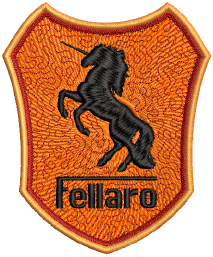Embroidery Production
 Design processing and encoding involve all the important, back-end operations of embroidery design and manufacture. This is where you actually output your designs to machine, disk, printer, cutter, and so on. For this, you will need an understanding of embroidery file types as well as different machine formats. Depending on your setup, you will also need an understanding of traditional storage media such as embroidery disks.
Design processing and encoding involve all the important, back-end operations of embroidery design and manufacture. This is where you actually output your designs to machine, disk, printer, cutter, and so on. For this, you will need an understanding of embroidery file types as well as different machine formats. Depending on your setup, you will also need an understanding of traditional storage media such as embroidery disks.
Design hooping
This section deals with selecting and centering hoops, both manually and automatically. It also covers defining and editing custom hoops. See Design Hooping for details.
Design reports
From the same EMB design file, you can output production worksheets or approval sheets for machine operators or customers respectively. This section describes how to create production worksheets and approval sheets as well as how to send designs as email attachments. See Design Reports for details.
Machine files
This section describes the different conversion options for opening and saving stitch and outline design formats. It also provides details about the processing of Melco CND outline files, including color merging, as well as reassigning colors to both stitch and Melco CND files. See Machine Files for details.
Embroidery output
This section describes how to stitch designs out with the Stitch Manager and with Connection Manager utilities. It also explains how to save designs for machine, how to read and write to embroidery disk. It also deals with exporting multi-decoration files. See Embroidery Output for details.
Machine networking
A Wilcom EmbroideryConnect machine network provides for wireless design transfer to embroidery machines with a USB port. When activated in the EmbroideryStudio software, you can send machine files wirelessly via a standard WiFi network to a compatible EmbroideryConnect device plugged into the machine. See Machine Networking for details.
 Design processing and encoding involve all the important, back-end operations of embroidery design and manufacture. This is where you actually output your designs to machine, disk, printer, cutter, and so on. For this, you will need an understanding of embroidery file types as well as different machine formats. Depending on your setup, you will also need an understanding of traditional storage media such as embroidery disks.
Design processing and encoding involve all the important, back-end operations of embroidery design and manufacture. This is where you actually output your designs to machine, disk, printer, cutter, and so on. For this, you will need an understanding of embroidery file types as well as different machine formats. Depending on your setup, you will also need an understanding of traditional storage media such as embroidery disks.